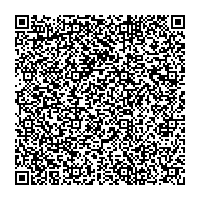TVBC's new leadership core:
Melinda Jean Stafford, President; Beatriz Ayala, Secretary; Ken Sonnen, Vice President; & Rena Alexander, Treasurer
Melinda Jean Stafford, President; Beatriz Ayala, Secretary; Ken Sonnen, Vice President; & Rena Alexander, Treasurer
Welcome All Beekeeping Enthusiasts
Welcome to the Treasure Valley Beekeepers Club of Idaho.
The Treasure Valley Beekeepers Club provides a great opportunity for everyone with an interest in bees to come & gather great resources and knowledge about the honeybee. Practical knowledge, workshops and demonstrations are provided throughout the year. At every meeting, we discuss important bee topics, along with a Q & A with experienced beekeepers. Everyone is welcome! To become a club member, come to any meeting to sign up. Dues are $10.00/yr or $15.00 for a family/yr. If you can't make our next meeting; you can download, print, fill out and mail in our registration form. The mailing address is located on the form.
The Treasure Valley Beekeepers Club provides a great opportunity for everyone with an interest in bees to come & gather great resources and knowledge about the honeybee. Practical knowledge, workshops and demonstrations are provided throughout the year. At every meeting, we discuss important bee topics, along with a Q & A with experienced beekeepers. Everyone is welcome! To become a club member, come to any meeting to sign up. Dues are $10.00/yr or $15.00 for a family/yr. If you can't make our next meeting; you can download, print, fill out and mail in our registration form. The mailing address is located on the form.
| bee-2017_tvbc_dues_reg.pdf |
Club Meetings
|
Our next regular Club meeting is scheduled for March 21st at the IOA Hall in Boise.
We meet the third Tuesday of most every month (unless we have a field trip, a Pub Swarm, etc.) at 6:30 pm, in Boise at: 
IOA Hall
401 Brazil St. (off Sunrise Rim, near Vista and I-84) Boise Please bring your own drinks. Map Considering a start in beekeeping for 2017?
START HERE!! A Tip O' the Ol' Bee Veil to Randy Oliver for this excellent introduction! Need Hive Components Fast?
Mike Morrison has a list of equipment that you can purchase locally and avoid shipping charges. Please see the following list for what he has available and his contact info:
YOUR TVBC OFFICERS
President/(Queen Bee) – Melinda Jean Stafford
Vice-Presidents – Ken Sonnen & Joyce Gebhardt Treasurer – Rena Alexander Secretary – Beatriz Ayala Past-President – Karla Kimball Committee Positions: Volunteers (no vote necessary) Web Chair – MJ Oresik & Chad Dickinson Community Education Chair - Terry Fackrell Plans Club education - Bug Days, Western Idaho Fair, community appearances by Club members, etc. Foothills Learning Center
The TVBC has partnered with the Foothills Learning Center to provide educational opportunities about the Apis mellifera (honey bees) for the public. We have a bee yard on the grounds used for the Honey Bee Apprentice Program taught each year for new beekeepers. Please visit their website for all classes available at the Foothills Learning Center.
CONTACT USLast Updated: 01/21/17
|
What Should a Beekeeper be Doing Now?February and March
February and August have historically been the two months on the opposite sides of the nectar flow to treat for Varroa mites, but this is not written in stone. There are new mite control options and they have different temperature range requirements and honey super withdrawal times. • In a nutshell, we do not want our Varroa mite populations to get too high – 3,200 has been cited as the economic threshold for the U.S. And, we do not want to skip a treatment window, if that means the threshold number will be exceeded before the next treatment window. • The need to treat should be based on your current mite population. If you have a high mite population, you should treat immediately. In early February your option is Hopguard 2 or Apivar (Amitraz). If you have a low mite population, you can delay and treat in March or April with controls that require shorter withdrawal times before supering but higher daily high temperatures for use. Mite Away Quick Strips (formic acid) can be used between 50-92 degrees F and Apiguard or ApiLife Var (thymol) between 64-95 degrees F. • Our most efficacious mite controls buys you about 4 months which includes the treatment period before you need to treat again. Note that this period can be extended by using mite tolerant stock, screen bottom boards, drone brood removal, powder sugar, etc. • A word of caution on mite management: Unless you are positive that you know your mite loads and are following a closely monitored plan, one application of any mite management agent ("hard" or "soft" chemicals), once a year has proven to be ineffective. There is no "Silver Bullet" nor a "Stake Through the Heart," when you are dealing with Varroa mites. • One possible and viable treatment option for Treasure Valley beekeepers is to use Mite Away Quick Strips in the spring (March/April) and Apiguard in August. Hopefully, one day soon, oxalic acid will be registered for use during winter broodless periods. • How do you estimate how many mites you have? Here are two techniques: the alcohol wash and the natural drop count.
Heft hives to find any light ones. Provide light hives emergency feed, preferably sugar candy/fondant or frames of honey. This is prime time for starvation, as brood production increases energy demands. • Look for signs of Nosema infected hives. Symptoms include: slow build-up (best indicator), disjointed wings, distended bloated abdomen, a lot of yellow streaks on the outside of the colony and crawling bees outside of the hive. These symptoms may also be associated with tracheal mites. Make sure suspect hives have good ventilation and as a last resort, be prepared to treat with fumagillin syrup (follow the directions exactly, overdosing does not help, and treat fumagillin with respect, as this material is dangerous stuff). • Find and remove queenless or dead out colonies. If pollen is actively being brought in, this generally indicates a healthy queen and hive. • Remove dead outs and find out why the colony succumbed – queenlessness, starvation, disease? If the equipment is disease free and in good shape (frames are not all dark, with thick cell walls, riddled with drone brood cells), store for future use in dry location stacked on end so air and light can penetrate to discourage mold growth and wax moth activity. • Spring usually brings some of the wildest and windiest weather. Make sure the lids are secured after you break the seals. • If you feel your area lacks sufficient natural nectar flows and pollen to fuel high-energy growth to make full-sized production colonies in time for the main nectar flow (end of May), feed sugar syrup and pollen substitute when the daily highs exceed 55 degrees. • Wax moth activity dramatically picks up when the temperatures rise. Keep an extra eye out for stored frames that have had brood and have pollen. Moth crystals (paradichlorobenzene) can be used for control, as well as freezing the frames. Exposing the frames to light can inhibit the moths, too. • Here’s one last thought: Don’t feed pollen substitutes too early. I would consider too early as January, February, and maybe the first part of March. Brood production will increase, which may exhaust winter food supplies prematurely. Early feeding also increases activity, metabolism, and hive moisture. The weather may be inappropriate for cleansing flights, increasing the likelihood of developing dysentery. Dysentery is the quickest and most effective way of converting a slight Nosema infection into a severe one. Winter should be a time of quiescence for the bees that enables the bees to live to take the colony over the period when little or no brood is being reared. My two cents worth. The above information was excerpted from the Oregon State Beekeepers Association webpage, found at: http://www.orsba.org/htdocs/home.php (June 2, 2012). The Treasure Valley Beekeepers Club extends a special thanks to Todd Balsiger, Forest Grove, OR for permission to post this information. | ||



